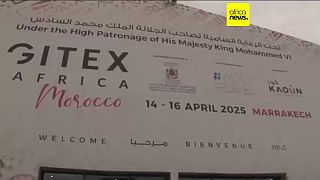Morocco
In one of Morocco’s top red pepper-producing villages, farmers gear up every year starting in August to begin the red pepper drying season, hoping to preserve this heritage.
Oulad Ali Loued is located 25 kilometers away from the central city of Fquih Ben Salah and 296 kilometers from Rabat.
It is known as the capital of red pepper and produces the most significant amount of red pepper in Morocco.
The red pepper drying season includes three main steps: harvesting, drying outdoors, and then turning the peppers into spices at a local cooperative.
However, the region's agriculture has been affected by drought, which has caused a sharp decline in production across Morocco.
“Some farmers who once planted 10 hectares now plant only one," said Mohammed Nosshi, the head of Red Pepper Dryers Association in Oulad Ali Loued.
Drying ideally takes one day if the weather is sunny, but it can take up to three days in cloudy weather, said Mohammed Hidach, a farmer and head of an agricultural cooperative in Oulad Ali Loued.
After the drying stage, the peppers are moved to the cooperative, where they are transformed into spices.
"We grind it, knowing that 6 kilograms of fresh red pepper yields one kilogram of red pepper powder. After that, we sift it, fill it into bags, and label them," Hidach added.
Half of the production, consisting of approximately 6 tons of both dried red pepper and red pepper powder, is exported primarily to Spain and Algeria.
This involves both sweet and spicy varieties.











Go to video
Exhibition in Morocco explores a world of color
00:53
Brazil eyes global food leadership amid U.S.-China trade tensions
Go to video
Oligui Nguema: A breakthrough or continuity for Gabon? [Business Africa]
Go to video
The EU moves to fast-track asylum claims by migrants from 7 countries to speed deportation
00:50
Spain: human trafficking ring smuggling moroccans into europe dismantled
01:02
First payments made to white farmers affected by land reforms in Zimbabwe